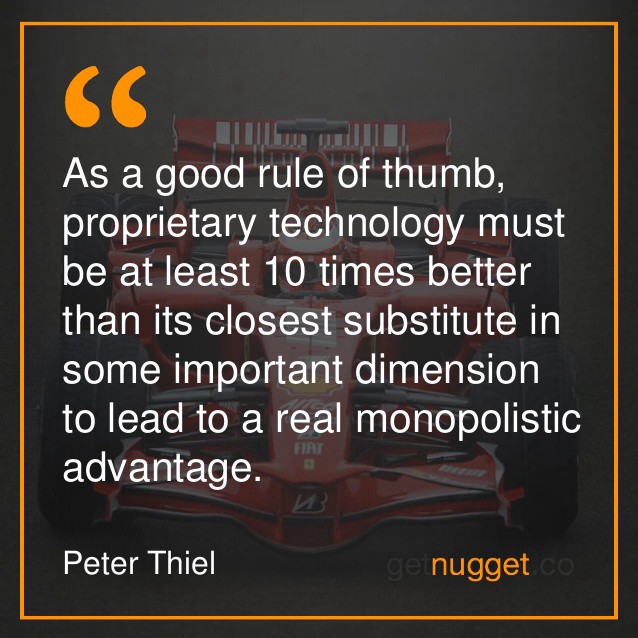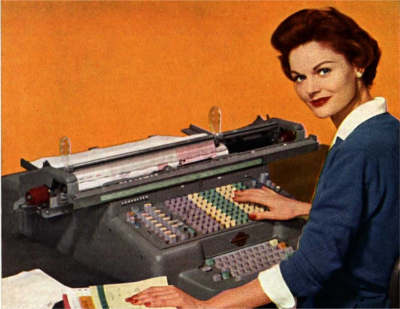Never-ending debates revolve around the mass adoption of cryptocurrencies. However, one detail is overlooked by some people. The first generation of blockchain was not designed for mass adoption despite the fact that there are attempts to change that. A blockchain for mass adoption must be designed for it from scratch and the third generation can achieve it. We have a look at it in more detail.

The first generation of blockchain was not created for mass adoption
Satoshi created Bitcoin as an ideological protest against the traditional banking system and from the technological point of view, the network itself was just a well-working prototype. The first generation of blockchain does not scale, transactions are slow and expensive, coins are volatile and the usage is difficult for the mainstream. It is like that by design. The first generation was created to be decentralized and censorship-resistant and as such, it had to sacrifice abilities that are needed for the mainstream. At that time, the main focus was put on decentralization.
Cryptocurrencies were created for those who face some persecutions, are censored, cannot use the traditional banking system for any reason, or are just dissatisfied with the current state. That all is not mainstream. The first generation was supposed to serve mainly to minorities in troubles or people that want to express some kind of protest.
As Jill Carlson said in the interview for Coindesk, cryptocurrency is most useful when breaking laws and social contracts and you probably would not want to live in a world where cryptocurrencies go mainstream.
Blockchain is not a new invention in the sense that there would not be similar or even better technology for users. There is fiat and there are cryptocurrencies. Mainstream is just fine with fiat since it is faster in a local context, transactions are cheaper, you are able to pay in online shops without fear whether the shop sends you bought goods, cash is more private, there is no volatility, everybody accepts it and you know how to use it. Mainstream does not care about possible censorship, inflationary monetary system, and economic troubles. The first generation of blockchain solved only a few problems: the censorship resistance, decentralization, and deflationary monetary system (or the system where the inflation rate and max supply of coins are known in advance). It is just an alternative that is useful only by minorities. You can buy drugs on the black market and the seller is able to receive the payment, you can support terrorists or dissidents in Hong Kong, you can take value out of Venezuela, you can pay for goods if you do not have a bank account. Nothing from that is useful for the mainstream, but it can be useful for minorities.
As Jill said in the interview, there is a long history of censorship-resistant and privacy-preserving technologies. For example Signal and Telegram for messaging, BitTorrent for file-sharing, Tor for web browsing, and others. These tools are not built for the mainstream. If you need to use these tools you probably need it to break a law or social contract. You might need to secretly discuss some illegal activity, illegally download movies or music for which you should pay, or browse pages that might be against the law in a given country or you just want to keep it secret. Maybe you do nothing wrong and you definitely have a right to privacy. However, somebody else can use these technologies for prohibited or illegal activities. Most people do not care about privacy. Just have a look at a number of Facebook users. The point is that only minorities need censorship-resistant and privacy tools. It is the same as with the current cryptocurrencies that offer to send value via the internet. For censored people and organizations, decentralized technologies provide an escape alternative. The usage of these tools come with a certain level of technological and societal discomfort. Mainstream would rather use faster, cheaper, more user-friendly alternatives without caring about privacy, or even centralization. If it should be changed than decentralized services must be technologically on the same level, or even better. It is said, that new technology must be 10x better to be adopted. We are not there yet with blockchain.

The first generation of blockchain has been invented for exactly this purpose. The ideology will always be there when talking about Bitcoin, Litecoin, Monero, or similar projects from the first generation. There always be a collision between the original ideology and mass adoption needs. Cryptocurrencies attracted price speculators that would like to see Bitcoin mass adopted. They would like to see how institutions, retail, and states buy it to make them rich. Well, they want it just for their self-interest benefit. Some people, many YouTubers, and some pro-crypto media try to persuade masses that fiat is broken, everything is wrong and all have to adopt cryptocurrencies. It is fine but it is probably an unrealistic vision of the future. Mass adopted technology is not about price speculation or the new distribution of wealth. It is about utility. It is about utility, that me, you and your neighbor can use with some benefit. People have no interest to make early-adopters richer. They just want to use the best available technology or fix the current financial, social, and political issues.
However, adoption is not only about solving the financial troubles of minorities, or maybe later for the majority. There are legal restrictions. A project that can be used to support terrorism or buy drugs can hardly be accepted by institutions, or be allowed to use it by states. It does not matter how much cryptocurrencies are used for these purposes. The point is that it is possible and there is no mechanism on how to prevent it. These abilities cannot be removed since it would completely destroy the original vision. It is not a technology problem but rather an ideology problem.
So, there are two main reasons why the first generation of blockchain can hardly be mass adopted. The first one is the original purpose and ideology. The majority of people desire to live in a world where there are some fair rules, laws, and social contracts. Most people want to belong to the mainstream majority. As we said, it is the opposite purpose of what the first generation of blockchain was created for. The second reason is about technical issues and the inability to compete with traditional centralized solutions. Mainstream does not adopt something just for the reason it exists if there is an alternative. Moreover, the alternatives are considered as regulated or not prohibited by authorities, and are better from the usability point of view. The majority of people would not probably be able to explain what decentralization exactly is and what are the advantages. So why they should adopt decentralized technologies? They do not see the point since they basically do not need it. Thus, at the moment, the adoption is more about the technology than about the ideology.
Some technical issues can be resolved. For example scalability and speed of transactions. It is questionable, whether the first generation can ever compete with the technological maturity of the third generation. The first layer of PoW networks will probably never scale but second layers could help. However, what is more important, some of the features like privacy will be most probably improved since the community wishes so and it can be the main show stopper for mass adoption. It can even happen that Bitcoin can be prohibited similarly as Monero, ZCash, or Dash if it introduces privacy. Mass adoption of protest coins is not probably a realistic scenario. Institutions and speculators might be allowed to buy it and the price might pump. However, it is not mass-adoption, it is just a price pumping. People must first recognize the sense of it if we should talk about mass adoption.
From Napster to Spotify
Let’s have a look at the history of the digital music industry. I personally remember Napster and the year 2000. Napster was a piece of software that allowed you to download music from the internet at times where most albums were available on expensive CDs. You could just tell the Napster what album or song you would like to have and you could have it soon in a digital copy on your computer. The free service just found another person’s computer that had the song or album and downloaded it for you. After downloading, you could listen to music via Winamp. Downloading was in most cases illegal since most music was not licensed for free distribution. Napster became very popular in a short time. However, the company ran into legal difficulties over copyright infringement. Napster had to shut down the service soon in 2001.
However, nowadays it can be said that Napster paved the way for streaming media services and transformed music into a public good for a brief period of time. After Napster, the music industry was not the same as before. Napster was for minorities that wanted to consume music for free not caring about paying for that. It was partly a protest against expensive CDs since publishers took most profits. What we have today? Services like Spotify. And guess what. It is a legal and mainstream service.

As you can see there was an illegal service for a minority making revolution and the result is that it evolved into mainstream evolution. Nobody cares that Napster was forced to stop and is not here nowadays. The impact is still tangible and we all benefit from it. Music is much cheaper and the majority is willing to pay for it. Still, you can have all the music you want for free, illegally downloaded, or streamed. Mainstream does not care and uses legal, reliable services with tons of cheap music.
Notice that the music was expensive mainly due to the middleman — the publishers. Music is cheaper nowadays mainly due to removing the middleman from the process of distribution. This is what blockchain must bring to masses. Cheaper and more fair services.
Mainstream blockchain
We will call the first generation of blockchain a protest blockchain and the third generation as a mainstream blockchain.
There is a difference between revolution and evolution. We consider protest blockchain as a form of revolution. Revolution mostly does not succeed unless a majority, or at least a significant part, actively participate. In the context of global cryptocurrencies, such a revolution would mean that the majority of the population is part of it and does not agree with banks and states. We can hardly imagine that.
Evolution is more about critically analyzing the current state of the financial sector, define issues and taking steps to fix them, or eventually replace them. It is the mission of mainstream blockchains. What troubles we have? Cross-border payments are expensive and slow, credit cards sometimes stop working due to some network issues, stock trades take days to clear, plenty of people mainly in developing countries are unbanked, some transactions are censored, banks have full control of transactions and customer’s data so there are privacy issues. Let’s do not forget to troubles with trust. We have to trust the traditional banking system since there is no other alternative. When there is no alternative then it is easy to dictate conditions and misuse the position on the market. So we need an alternative and we need mainstream blockchain. It is about a healthy competitive market in the world of finance.
Cardano has been designed for mainstream adoption in mind from scratch. Thus, three main pillars have been defined at the beginning: scalability, interoperability, and sustainability. Cardano will be ready for mass adoption from a technology point of view. It makes sense. There was the first generation with some mission. Cardano came later and the mission is logically different. Cardano is not a protest blockchain. We already have projects that serve well the purpose. IOHK team uses different consensus algorithm that allows high scalability and will have fast and cheap transactions. These features are absolutely needed to compete with the current financial systems or even overtake them one day. To achieve that, smart contract technology has been invented and we must continue with improvements.
The IOHK team builds Cardano for the mainstream, so it is important to discuss with people, institutions, banks, states, regulators, and other authorities what is required, which abilities the project needs to have, and where are the borders of privacy. Privacy is not a black-and-white feature. It is a scale. For example, you might be allowed to do some payment privately, however, only if you are over 18. To know that, some identity system must be in play. If it is needed, the team is not scared to plug-in or even develop such a system.
However, scalability does not have to be an obstacle. This feature is absolutely crucial and can decide what network people will be able to use in the future.
The biggest question is for what the majority needs blockchain. If it is not a protest blockchain then some useful features must be on the table. Fast and cheap cross-border payments, some improvements within stocks and traditional exchanges, the gaming industry or supply chain seems not to be for the mainstream.
The mainstream would very probably appreciate decentralized banking services if the conditions of use are better. For example, cheaper loans, or the possibility to create a contract that cannot be changed. It is possible to have decentralized services that are regulated. Decentralization is not connected only with protest blockchain. Mainstream blockchain must be regulated and it can remain decentralized. It is for mainstream so it is possible that minorities will not use it or even cannot use it for illegal activities. For that, there are protest blockchains. Both variants are needed, valid, and make sense.
Summary
After the burst of the internet bubble, many companies disappeared and just a few survived and their stocks rise. Maybe, we can see the same in crypto-space. Mainstream blockchains can succeed and be used globally. The success would be bigger if protest blockchain remained only for minorities. Mainstream blockchains can compete with traditional financial systems and be better in some aspects. If it is going to happen the ADA coin might be the second chance for those who missed the Bitcoin train since so far there is not mainstream blockchain that would be mass adopted. Or maybe some other competitor. There are a few solid third-generation blockchains and they take a relevant market share.
We do not want to say that Bitcoin cannot be adopted by masses. It can happen, but it is less probable in our view. On the other hand, Bitcoin custody services have been built and some institutions consider to buy it. It is a paradox that institutions want to buy protest coin but the question is why they want to do so. It might be just speculation. Why should the majority care that institutions are going to buy up bitcoins? If there is no real utility it basically does not matter and if institutions will own most coins will it be better for masses or not? Hard to say.
Our division to protest blockchain and mainstream blockchain is not dogma or something, that is 100% valid consideration. Of course, Bitcoin might go mainstream and Cardano might be used by minorities. Nobody is able to predict the future and everything is possible. We believe, that from the point of mass adoption, there must be a project that must be technologically matured and there should not be some regulatory obstacles.
There will not be one winner taking everything. We will probably see more interconnected blockchains making one network from a user’s point of view.
 Cardano is able to solve the real-world problems
Cardano is able to solve the real-world problems Why I believe in Cardano
Why I believe in Cardano Cardano has a fair distribution of ADA coins
Cardano has a fair distribution of ADA coins What is the real use-case of Cardano?
What is the real use-case of Cardano?